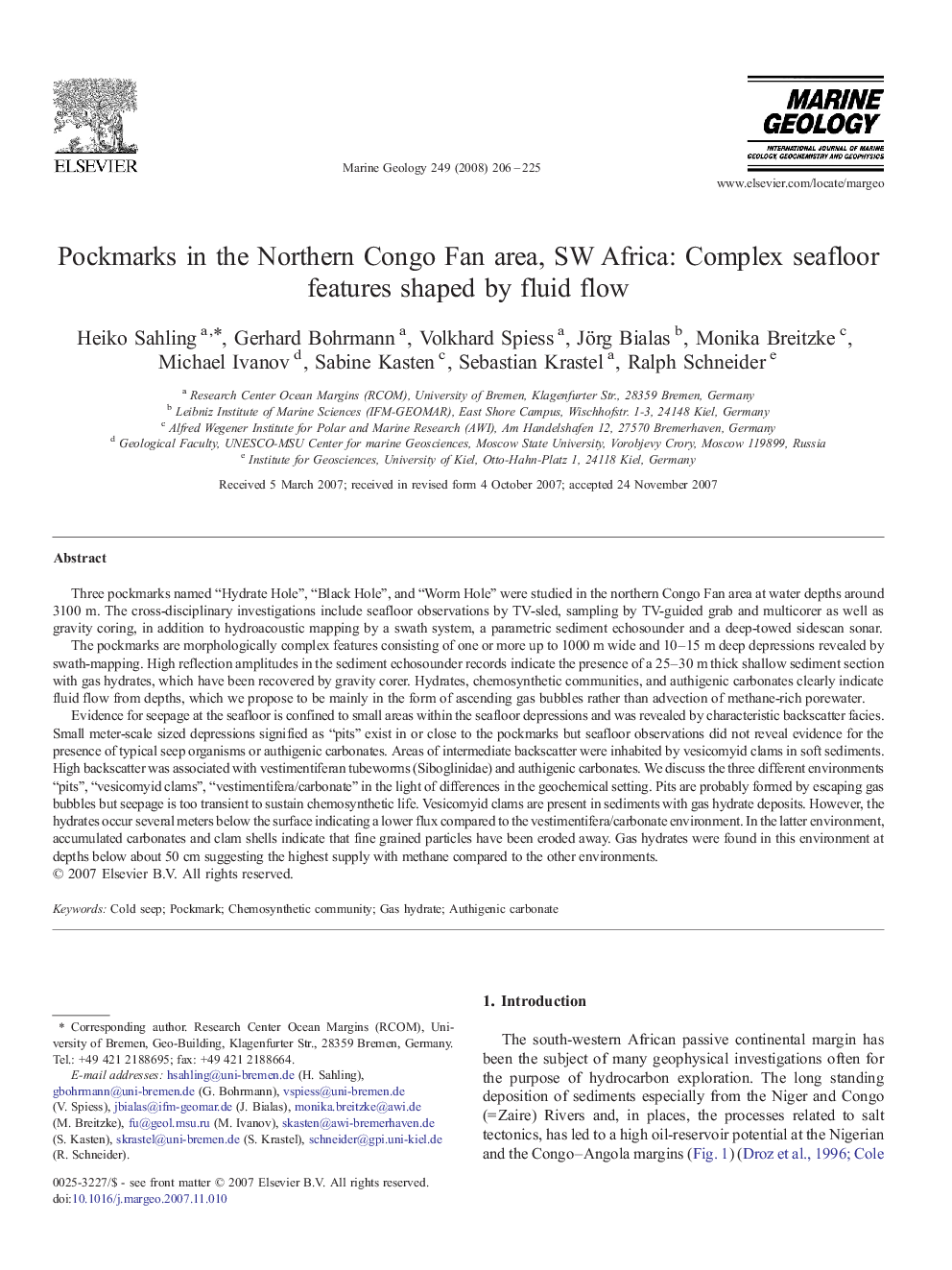| کد مقاله | کد نشریه | سال انتشار | مقاله انگلیسی | نسخه تمام متن |
|---|---|---|---|---|
| 4719336 | 1639183 | 2008 | 20 صفحه PDF | دانلود رایگان |

Three pockmarks named “Hydrate Hole”, “Black Hole”, and “Worm Hole” were studied in the northern Congo Fan area at water depths around 3100 m. The cross-disciplinary investigations include seafloor observations by TV-sled, sampling by TV-guided grab and multicorer as well as gravity coring, in addition to hydroacoustic mapping by a swath system, a parametric sediment echosounder and a deep-towed sidescan sonar.The pockmarks are morphologically complex features consisting of one or more up to 1000 m wide and 10–15 m deep depressions revealed by swath-mapping. High reflection amplitudes in the sediment echosounder records indicate the presence of a 25–30 m thick shallow sediment section with gas hydrates, which have been recovered by gravity corer. Hydrates, chemosynthetic communities, and authigenic carbonates clearly indicate fluid flow from depths, which we propose to be mainly in the form of ascending gas bubbles rather than advection of methane-rich porewater.Evidence for seepage at the seafloor is confined to small areas within the seafloor depressions and was revealed by characteristic backscatter facies. Small meter-scale sized depressions signified as “pits” exist in or close to the pockmarks but seafloor observations did not reveal evidence for the presence of typical seep organisms or authigenic carbonates. Areas of intermediate backscatter were inhabited by vesicomyid clams in soft sediments. High backscatter was associated with vestimentiferan tubeworms (Siboglinidae) and authigenic carbonates. We discuss the three different environments “pits”, “vesicomyid clams”, “vestimentifera/carbonate” in the light of differences in the geochemical setting. Pits are probably formed by escaping gas bubbles but seepage is too transient to sustain chemosynthetic life. Vesicomyid clams are present in sediments with gas hydrate deposits. However, the hydrates occur several meters below the surface indicating a lower flux compared to the vestimentifera/carbonate environment. In the latter environment, accumulated carbonates and clam shells indicate that fine grained particles have been eroded away. Gas hydrates were found in this environment at depths below about 50 cm suggesting the highest supply with methane compared to the other environments.
Journal: Marine Geology - Volume 249, Issues 3–4, 31 March 2008, Pages 206–225